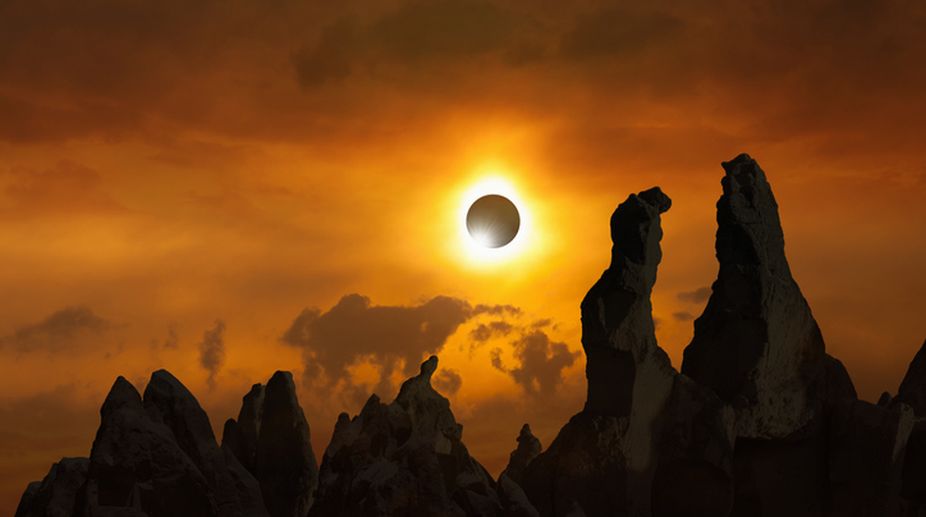1st solar eclipse of 2024 garners 1.2 mn posts on X: CEO Linda Yaccarino
The eclipse, which swept across 15 states in the US, Mexico, and Canada, began at 9.13 PM IST on Monday and continued till 2.22 AM IST on Tuesday.

(Photo: Getty Images)
People in India will be able to witness the August 21 total solar eclipse on a YouTube channel, thanks to an initiative by Space India.
The Delhi-based Science Popularisation Association of Communicators and Educators, will live-stream the upcoming celestial event from the US, the company said in a statement on Saturday.
The solar eclipse — when the Moon completely covers the Sun, will cross the US from Oregon to South Carolina over the course of an hour-and-a-half, and 14 US states will experience night-like darkness for approximately two minutes in the middle of the day.
Advertisement
“This is an unique phenomenon. The path of the total solar eclipse will cut throughout the US and will be viewed by millions.
“Observers outside this path will still see a partial solar eclipse,” said Sachin Bahmba, Chairman and Managing Director at Space Group, who is leading the team from India for the expedition.
Amateur astronomers such as Yogeshwar Kanu Aggarwal, Luv Sharma, and Surinder Solanki, will accompany Bahmba, whose expedition includes taking photographs of all important phases observed during a total eclipse — called as “contacts.”
The team will also be able to get unique and amazing features such as “Diamond Ring” and “Bailys’ Beads” — which happens as pinpoints of light are passed through the uneven features and craters of the Moon when the moon is covering the sun.
The experiments will include studying the corona of the Sun which is only visible during an eclipse.
“The corona… gives valuable information about the temperature of the Sun’s atmosphere. Besides, temperature on Earth is expected to fall during the eclipse. So, the temperature will be recorded at different stages,” Bahmba explained.
The live streaming will be done from Idaho in the US using a 50 mm f/5 finderscope, a small auxiliary telescope mounted on an Astrotrac tracker — the main astronomical telescope — to follow the Sun.
The device will have a webcam and a solar filter fitted to it, which will enable streaming directly on the official YouTube channel of Space India and will also be available on the organisation’s website.
Space India recently organised a series of online interactions with Padma Y. Fisher, Senior Research Scientist at the Space Science Institute, California, to take students, researchers, and astronomers through a detailed experience of the total solar eclipse.
The interaction consisted of an interesting presentation on Total Solar Eclipse containing the information on different types of eclipses, reasons behind them, research work going on in this field.
Fisher will be heading a Citizen Science Experiment, on August 21, that is one of the 11 ground-based experiments being supported by NASA.
Space India had also conducted similar expeditions during other total solar eclipses in 2009 and annular solar eclipse in 2010.
Advertisement